Questions
Where do the poorest residents live in Paris? How did they get there?
Discussion
Since the reconstruction of Paris began under Napoleon III, Paris has sought image and elegance and wealth. No more cramped, dirty alleyways, grand sunlit boulevards will take their place. No ramshackle cottages or leaning and leaking medieval homes, but grand white and cream limestone apartments with mansard roofs. This process of urban redevelopment has necessarily come at the expense of the working class and lower-income Parisians. Whether this was intentional or not is a matter for debate. What is evident is how over time the least fortunate Parisians were pushed beyond the city walls and the borders of Paris into the outskirts and outlying suburbs.
Paris by the time of Haussmann had its fair share of wealthy residents, but an abundance of working-class and lower-income residents as well, who had flocked to the burgeoning industry of the city. Upper-class Parisians, most notably those in power, were resentful of this, hence the impetus to rebuild Paris, which only began in earnest after Napoleon III took power and sought to build a capital befitting an empire, something his uncle desired but failed to accomplish. The cramped medieval core of Paris was largely destroyed, with the exception of le Marais (then a wealthier neighborhood). Many, including writer Victor Hugo, accused Haussmann of destroying Paris’ medieval charm. De Moncan notes though that this charm consisted of, “20 people living in one room with no light and no toilets, just a common courtyard into which they did their business. People like Hugo forgot how truly miserable Paris had been for ordinary Parisians.” (de Moncan 40).
Along with redeveloping the core of the city, the city expanded as well. There were two forms of outlying settlements nearby: the faubourgs, and the bidonvilles. The faubourgs (a term that meant suburb, coming from the Latin “foris burgum”) (De Moncan 37) were more organized settlements like Montmartre. They were annexed and Paris expanded its borders to its new city walls. The remnants of the faubourgs include streets like the Rue de Faubourg St. Honore as well some of the major neighborhoods of Paris like the aforementioned Montmarte. The bidonvilles were not organized and were shantytowns rather than built-up settlements. They were simply demolished in Paris’ redevelopment. New buildings were constructed in place of the faubourgs and bidonvilles but they were not always hospitable to the former residents of the settlements. The key difference is that the faubourgs were organized and recognized settlements that were legally and officially annexed by Paris. The bidonvilles were informal and unrecognized, and thus more easily done away with by reconstruction.
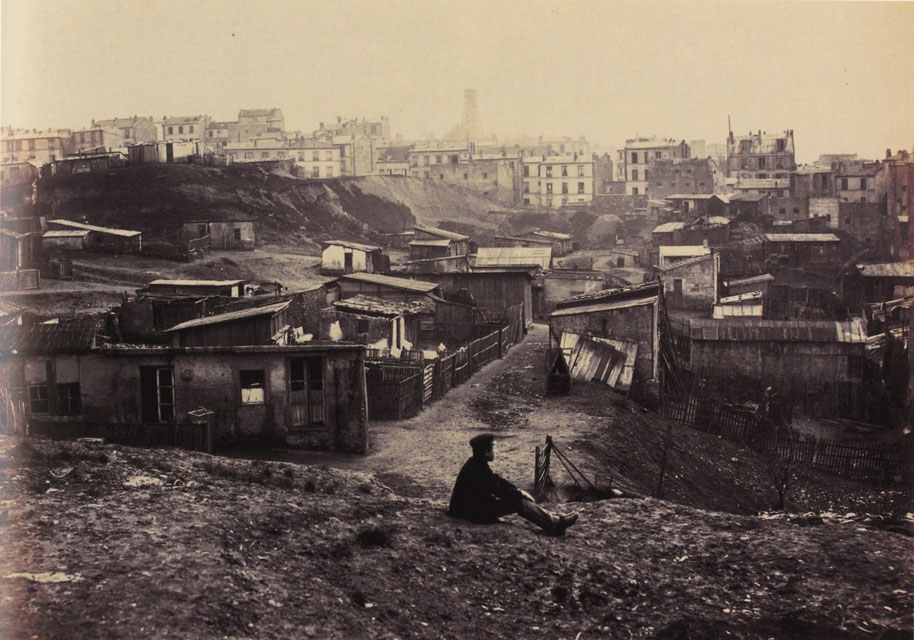
Figure 1: A bidonville. (Messy Nessy)
In the traditional Parisian style building authorized by Haussmann, the five- to six-story cream or off-white limestone apartment building most people can envision, different income groups were designated for different floors. The ground floor was for retail, cafes, restaurants, or other shops. The first floor was for the wealthiest Parisians (De Moncan 50). In today’s New York City the most expensive listings are those at the top of towering glass skyscrapers, but todays’ New York has elevators. 1800s Paris did not have the same amenities, so the wealthier Parisians wished to climb fewer flights of stairs to reach their apartments. As one went up in floors, one found lower-income people, at least initially. Over time, as Paris became a more and more expensive city to live in, the top-floor mansard rooms for the lowest income residents were increasingly inhabited by servants of the tenants below rather than people who could afford those rooms on their own terms. Servants were the only ones who could afford to live in those rooms because their living expenses were taken care of by their employer who resided in the same building.
Today, Paris regularly ranks as one of the costliest cities in the world to live in, fighting for first place with the likes of Singapore, Hong Kong, Sydney, and Vienna. Even the poorest arrondisement of Paris (the 19th), is unaffordable for many French. Less fortunate French people still find themselves living beyond the former walls of Paris, which are now replaced La Boulevard Peripherique. Among the issues with finding housing is the fact that Paris retains strict zoning and construction rules. Paris’ modern and elegant image that came with its redevelopment is now key to its identity as the capital of France and the capital of tourism. Major changes are avoided lest they blemish the city. The Tour Montparnasse (the tallest building in Paris besides the Eiffel Tower) remains an object of scorn among the people of Paris. The lack of major redevelopment post Haussmann meant that the bourgeois residents who moved into Paris in the later 1800s could afford to stay in Paris’ city center and pay rent or taxes, so they did. The poorer inhabitants, and other people in France and from abroad who wished to move to Paris would find few options in the city center itself though (Misra).
The kind of high-density design necessary to accommodate the many people who wish to move to Paris cannot be built in Paris except on the outskirts or in the suburbs (Misra). The famous architect, Le Corbusier, had a plan for Paris, the Plan Voisin, that would have demolished most of Paris north of the Seine and replaced it with massive, towering apartment blocks set apart from each other by highways and greenspace. This plan was obviously not accomplished, at least in Paris proper. In the northern and eastern suburbs beyond Paris, however, large, modernist and brutalist apartment blocks were erected after the 2nd World War to be affordable housing for the French working class, but also, an increasingly large immigrant population from France’s colonies in the Middle East, Maghreb, and Sub-Saharan Africa. The much decried and depressing design of these buildings felt more apt for the Soviet Union than the suburbs of Paris and became among the many factors contributing to poorer standards of living in Paris’ suburbs (Mucchielli & Lepoutre).
The suburbs also acquired a new name: “les banlieues”. The term banlieue itself is a neutral term, it simply means suburb. It could refer to any suburb from the ritzy and wealthy suburbs of the south and west of Paris such as Versailles, St. Cloud, St. Germain-en-Laye, and Neuilly-sur-Seine. But the term has a colloquial meaning that specifically refers to the low-income suburbs disproportionately inhabited by immigrants and their descendants, particularly those north and west of Paris, such as Bobigny, St. Denis, Grigny, and Clichy-sous-Bois (Mucchielli & Lepoutre).
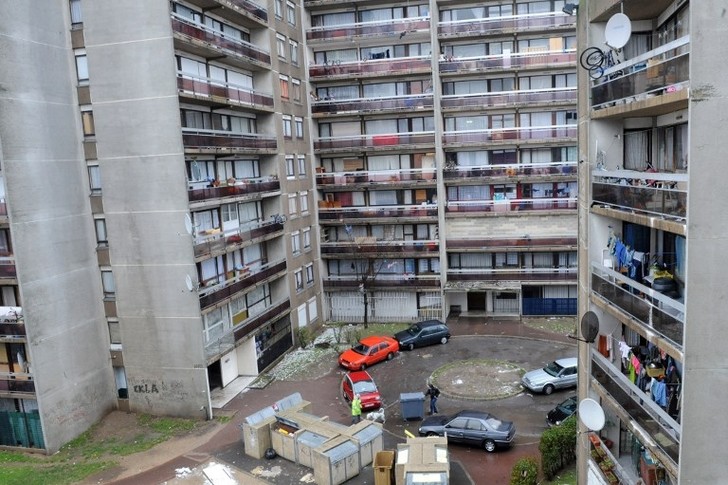
Figure 3: Public housing in Clichy sous Bois, a well-known banlieue of Paris. (Reddit u/PhilippeLeBel)
The banlieues of modern Paris remain economically depressed for a number of reasons. Among them is lack of access to transit (Lambert). The Paris Metro does not extend very far beyond the city borders, and where it does reach, riders are on trains that stop at every station before they reach their destination. The faster Reseau Express Regional, a commuter system, was designed with the wealthier suburbs and commuters in mind traveling to Paris’ core or to La Defense, the skyscraper office park just outside Paris’ western border. The majority of Parisians also do not own a vehicle, especially in the banlieues, leaving residents physically immobile, and thus socially immobile. Residents cannot travel to jobs, so many remain unemployed. Unemployment levels hover around 24% in these areas versus 8% in France at large (Mucchielli & Lepooutre). Unemployment and lack of opportunity is certainly a contributing factor to the larger incidence of crime in the banlieues as well, which incurs a greater police presence, which leads to greater tensions between the authorities and the community. This cycle of problems continues to plague the banlieues, sometimes bulbbing up into riots, as occurred in 2005. Sometimes it leads to radicalization. A number of terrorists or terrorist suspects in France have originated in the banlieues of Paris.
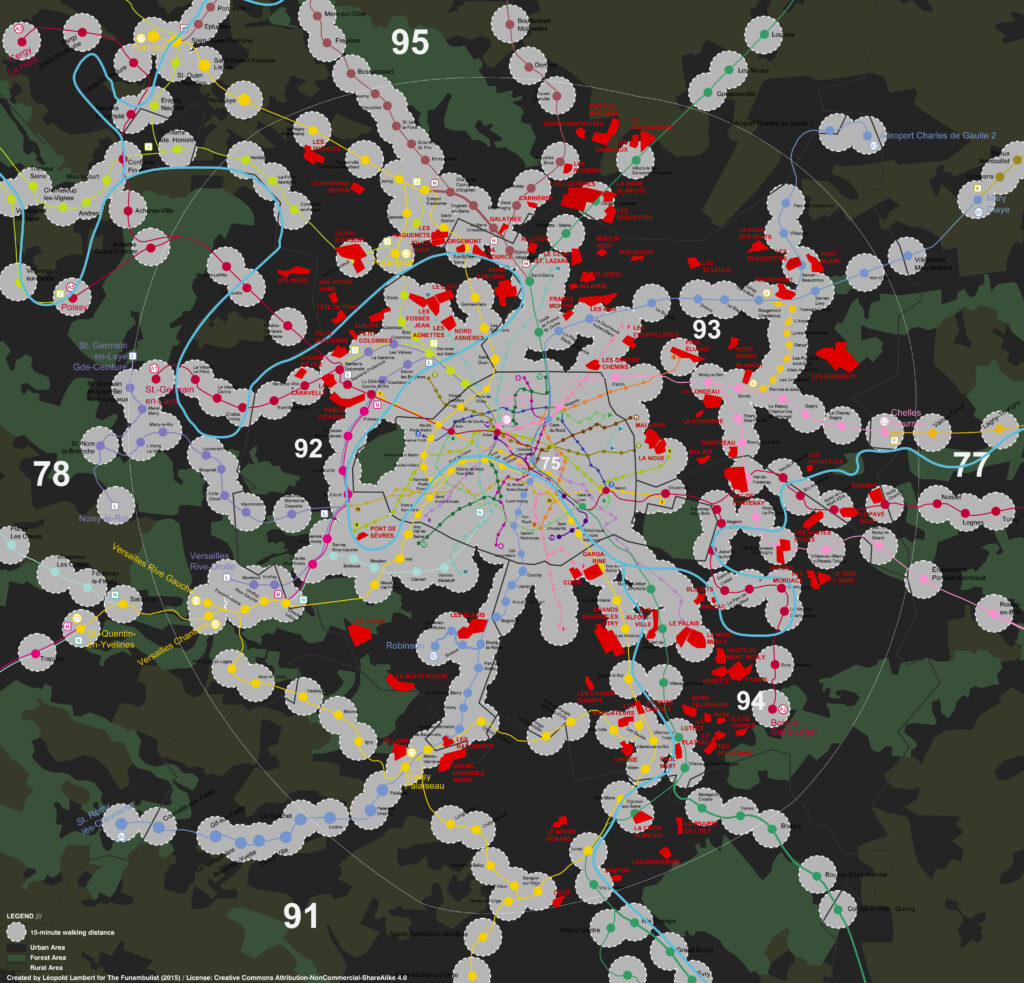
Figure 4: Transit connectivity in Paris; in grey is a radius indicating a 15-minute walk to the station; in Red are major public housing projects. (Léopold Lambert)
Since the redevelopment of Paris by Haussmann, the core city was increasingly inhabited by those who could afford it, the wealthy. Those who could not found themselves pushed to the outskirts. Later newcomers to Paris could never find their way in the first place. The issues of crime and disease and general overcrowding that plagued old Paris were not really cured, but moved outside Paris, outside the walls, outside the boulevard.
Sources
De Moncan, Patrice. Le Paris D’Haussmann. 2002
Velasquez, Victor. “Architectural Patrimony In The Graphical Representation Of The Voisin Plan.” Journal of Architecture and Urbanism, vol. 40, no. 3, 2016, pp. 229–239., doi:10.3846/20297955.2016.1210051.
Lambert, Leopold. “15-Minute Walking Distance from a Train Station: Spatial Inequality in Paris Banlieues.” THE FUNAMBULIST MAGAZINE, 24 July 2017, thefunambulist.net/architectural-projects/15-minute-walking-distance-from-a-train-station-spatial-inequality-in-paris-banlieues.
Mucchielli, Laurent, and David Lepoutre. “Cœur De Banlieue. Codes, Rites Et Langages.” Revue Française De Sociologie, vol. 39, no. 3, 1998, p. 616., doi:10.2307/3322990.
Misra, Tanvi. “The Othered Paris of the Banlieues.” CityLab, 25 Dec. 2017, www.citylab.com/equity/2017/11/the-othered-paris/543597/.\
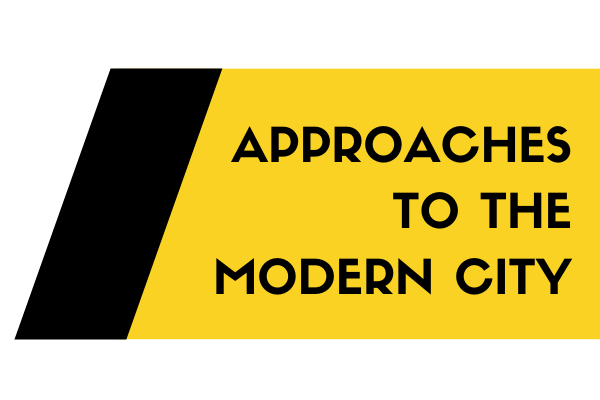
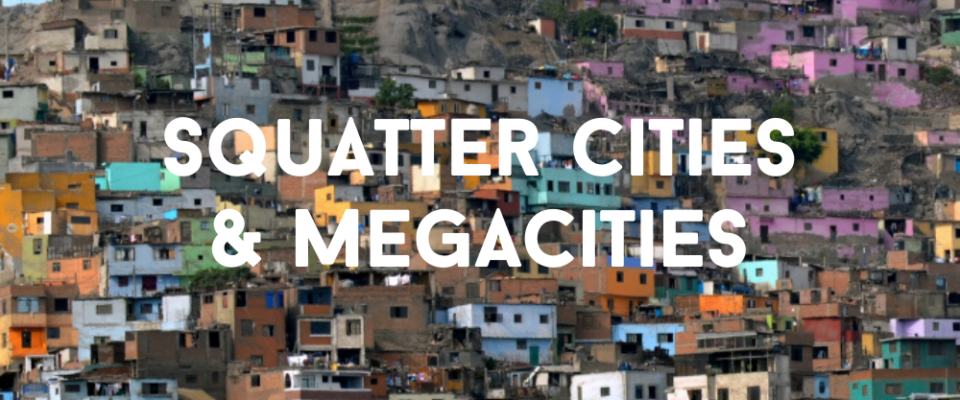
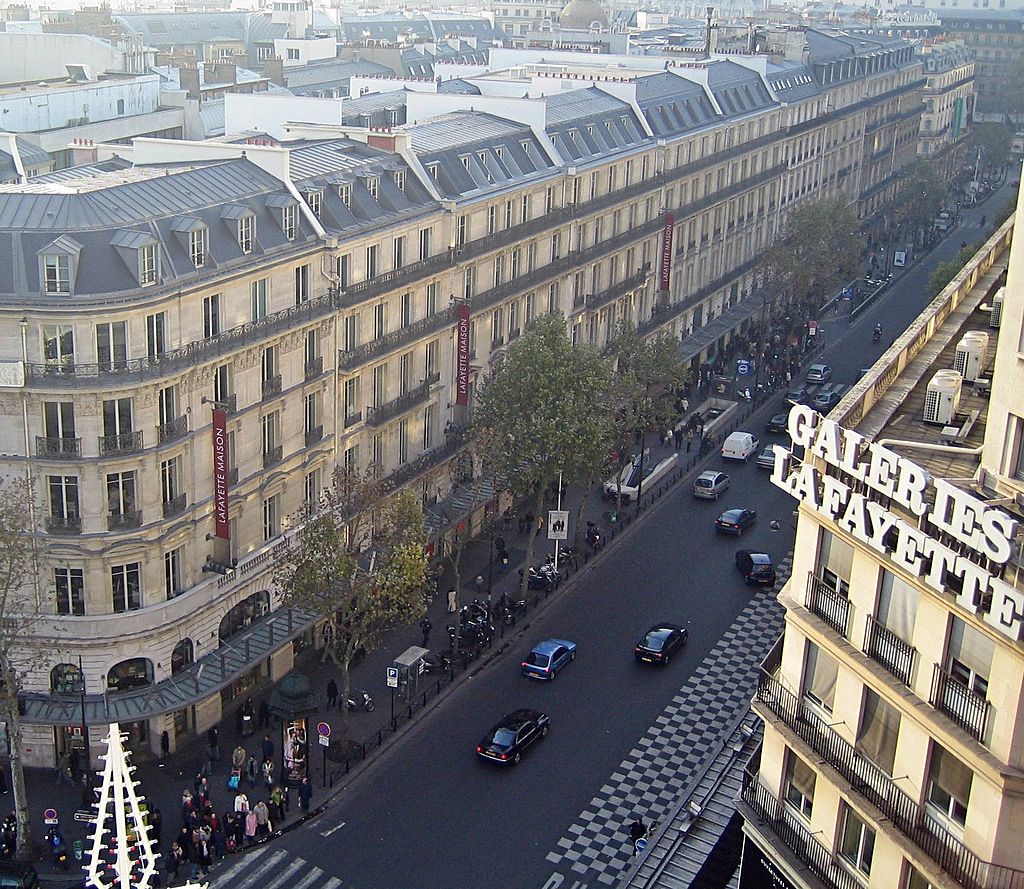
ไม่ใช่แค่คุยเสียว! รู้ยัง? Thlive.club ให้คุณสร้างรายได้ง่าย ๆ ด้วยวิธีนี้ กดเลย thlive
ไม่ใช่แค่คุยเสียว! รู้ยัง? Thlive.club ให้คุณสร้างรายได้ง่าย ๆ ด้วยวิธีนี้ กดเลย thlive
ไม่ใช่แค่คุยเสียว! รู้ยัง? Thlive.club ให้คุณสร้างรายได้ง่าย ๆ ด้วยวิธีนี้ กดเลย thlive
ไม่ใช่แค่คุยเสียว! รู้ยัง? ให้คุณสร้างรายได้ง่าย ๆ ด้วยวิธีนี้ กดเลย thlive
สมัครบาคาร่า tx168 is a famous camp that many people love to play online . If you are looking for a complete website in terms of reliability, convenience, and great promotions, I would like to recommend tx168, the hottest online game camp today. With a fast and convenient automatic deposit-withdrawal system, you can bet with no minimum. Even if you have only 10 baht, you can start having fun with games. Most importantly, it also comes with a refund promotion that helps players get value for every bet.